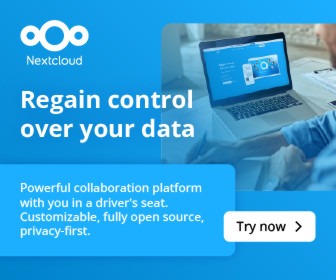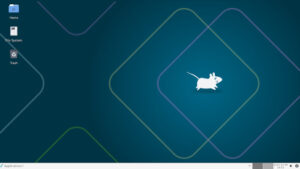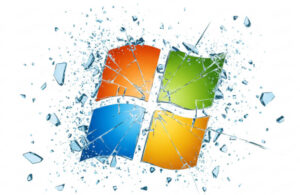When Linus Torvalds was asked last week at LinuxCon where he’d like to see Linux excel next, he replied, “I still want the desktop.”
I nearly stood up an cheered when I read this, here in my house nearly 700 miles from the conference. That is until I became confused by what he said next.
“The challenge on the desktop is not a kernel problem. It’s a whole infrastructure problem. I think we’ll get there one day.”

Photo by Beraldo Leal from Natal / RN, Brazil.
Of course there’s not a kernel problem. From where I sit, there’s not a GNU problem either. I’ve been using Mint with Xfce for a while now and I find it better than any version of Windows I’ve ever used, many times over. Other than needing a little polishing with some distros, there’s no problem whatsoever with the penguin. Desktop Linux is only the best there is.
However, if by “infrastructure problem” he means that consumers can’t rush down to the local Best Buy store and pick a new computer off the shelf that’s already been loaded with a carefully configured Linux distro, I agree. That is a problem. Right now, it’s the only thing keeping Linux from having decent user share. But I’m pretty darn sure that’s getting ready to change.
We all know that most people will never install a new OS. When it comes to computers, most people are users, not tinkerers, and they don’t want to go there. Even if they purchase a machine loaded with a version of Windows they don’t particularly like, Windows 8 for example, they’re still not going to wipe or partition the hard drive to give Ubuntu or Mageia a try. While it’s true that it’s easier than ever to convince some users to install Linux to give new life to boxes that have become obsolete or burdened with malware, most users won’t go that route and never will.
Most people had rather trade-in an old computer for a new one, just as they do with their cars, refrigerators, microwaves and practically every other major purchase. It’s how we’re trained to do things in America and we’re not going to break that potty training on a grand scale with Linux, no matter how good we make it.
But Linux is going to soon gain traction on the desktop.
With the success of Chromebooks, it’s only a matter of time before the OEMs start pushing well designed laptops and desktops with customized versions of Linux installed. It’s bound to happen. Computer makers pay a fortune to Microsoft every year for the privilege of installing Windows. But Windows’ luster as a brand has faded, making this no longer money well spent.
Many of the software problems that once caused OEMs to push back from Linux are quickly disappearing thanks to the cloud. Office 365 seems to work just fine in Linux, for those users who think they absolutely must have MS Office. Even the Outlook Web App is functional. Evidently Adobe’s cloud version of Photoshop still doesn’t support Linux, but it’s only a matter of time before that service, too, becomes platform independent.
We’ve moved into an era where most casual computer users, those who mainly surf, send emails and watch videos, are no longer using traditional desktops and laptops. Tablets and such suit their needs fine. More and more, desktop users are those who need them for work purposes. And as the casual user moves to consumer devices made primarily for entertainment, the user base on desktops will become more tech savvy, which means less married to the status quo and more willing to seek out whatever will get the job done.
It’s true. There will be no “year of the desktop.” But slowly we will see desktop Linux use increase.
Christine Hall has been a journalist since 1971. In 2001, she began writing a weekly consumer computer column and started covering Linux and FOSS in 2002 after making the switch to GNU/Linux. Follow her on Twitter: @BrideOfLinux







I really don’t think that it will, not on a mass consumer market scale anyway, not GNU flavors. All the infighting, alienation of users by developers, and general ‘we know better than you so go away’ attitudes ensured that would not happen. The only shot now is ChromeOS and Android which both use the Linux kernel, target the consumer marker, and are pretty successful. Neither of those operating systems are GNU/Linux though, and they aren’t developed by people who care more about their egos and self satisfaction than the users they target.
For those who love Linux, never pay attention to the naysayers. Linux’s rule on the desktop is a dream that is gradually coming true. Linux has survived when survival was almost impossible. It just won’t back away now that things have become a lot easier. I still remember the day when windows was the one single choice available for me as an ordinary user. And I still remember the day when I heard about Linux and tried it for one day then hurried back to the safety of the familiar windows…and I still remember the day when I ditched windows for good and have since been enjoying Linux. This is me, someone living in a part of the world and doing a type of job where the chance for Linux to even be heard of is almost nonexistent…
@Andrew
Well, it certainly may not ever get as big as some hope, but it’s not really going to be for the reasons that you mention. Those things aren’t even on the radar of the general public. To the general public, it’s just going to be the face of one or a few distributions that are either accepted or not, like Mint, Ubuntu, Xubuntu, Suse, or PCLinuxOS.
I actually already know several people who have used Linux who had never even heard of it five years ago. I’ve been a bit surprised lately at the awareness of it that has developed. Most of these people seem to have used it to resurrect slightly older hardware that had a Windows installation that no longer worked correctly. I’m not saying that it will grab the desktop market, but it does seem to be gaining fairly steadily, if slowly, at the moment.
Incidentally, I believe ChromeOS is GNU/Linux underneath, but it’s true that the Chrome browser/desktop UI on top of it disguises it pretty well. Android, on the other hand is completely different starting immediately above the kernel.
@CFWhitman, you’re right, it’s not on the radar of the general public. All the general public knows is that it’s difficult to use, it’s inconsistent, and it’s incompatible. The underlying reasons for that are those that I’ve mentioned, with the exception of incompatibility which is only due to proprietary format lock-in. It’s 2014 and you can give any common user an Ubuntu or * distro and they will still run into many problems. Problems that for the most part don’t exist in ChromeOS or Android. It’s not a problem really, but the consumer desktop simply isn’t a goal of the majority of FOSS developers and it never has been. Even RedHat realized it wasn’t an achievable goal.
The “Year of the Linux Desktop” already happened. It was 2000. That was the year that Linux finally caught up with Windows in terms of usability with a GUI.
Prior to that year, Linux usage was around .0001 of the market. After that year, Linux was at .01 market share (1%). since that time, Linux on the desktop has been growing slowly but surely. Two or Three years ago, Linux on the desktop was up to 10% per Microsoft information.
Don’t worry about those numbers, the total number of installed desktops is more than 100% because of ‘dual booting’. Microsoft figured that out, which is why they no longer spend so much vitriol on Linux.
The usual counters don’t work with Linux because there are comparatively few vendors who install Linux on desktop machines. Those vendors are the only installs that folks like Netcraft count. They have literally no way to know how many computers have Linux on them when they run.
By Web Stats, Linux is on between .1 and .2 of the total desktops. Just where it is depends on what is counted and how it is counted. Best guess, it’s around 12%.
That is enough to have interested Valve. They seem to be making money selling games to Linux users too. Doing that takes about 10% of the desktop market.
I expect to see Linux use grow to perhaps 0.2 to 0.3 of the market. That’s grow to around a quarter of the desktop market for you who don’t read numbers very well.
I don’t expect Linux to dominate the desktop market the way it does the supercomputer market, but it is a better desktop for workstations than it’s competitors.
I think this article is definitely on. The Desktop will never go away. But the trend it toward mobile devices and as the article mentioned, there’s really no reason to go down the Windows path as it is tired and bloated, not to mention expensive. Why not pick a platform like GNU/Linux that is versatile and able to run on a wider variety of hardware than Windows (old & new alike). I too use GNU/Linux exclusively on the server and desktop. I do admit, there are still distros that are still not as easy to get running. Ubuntu seems to get it right making the installation and use easy. I use CentOS on the server and desktop, and for the desktop I need to rely on 4 repositories to get all of the software I need. Fedora has everything, too, but is buggy and needs frequent upgrades to stay current with updates. There just isn’t one distro that is perfect, and we need one to be as close to perfect as possible for the average consumer to use it. But like the article states, we’re getting there. Users are more tech savvy than ever, and that helps.
I owned an AT&T 3b1 UNIX machine & tried so many Linux distros. After many years of experience with PC, I wll stick with Windows* and not Linux or Apple OS’es
Windows, quite simply stated,WORKS!
I think Linux will soon be competing for the desktop by way of Google, not by way of 1001 distros. Either 1) there will be a great infrastructure build out providing affordable bandwidth to enable Chrome OS to succeed, or 2) Android will exploit user familiarity to implement its formidable app store and local installation model. In both cases, you get an OS that you already know and that will update current apps for the life of the machine. By contrast even if you buy an OEM installation of Ubuntu 14.04 / Mint 17 “LTS” the software repositories will be out of date by 2016, it will be necessary to reinstall a newer version of the OS, and “we all know that most people will never install an OS.”
Like so many others, I started using GNU/Linux with dear old Mandrake, all those years ago. Currently, I’m using Manjaro, the Arch re-distro, and it’s awesome, truly awesome. It does everything I’m ever likely to need, in the most stable and secure manner possible. Linux has truly come a very long way.
Over those years I’ve sometimes administered(?) XP, and currently, Windows 7 machines, for people that can’t. Every time, it’s just like walking into an insane asylum.
How can people live like this?
The whole thing seems ‘calculated’ to drive you insane and you soon start tearing your hair out.
Linux will win because Microsoft is dying as we watch.
Just like great empires ruled by mad dictators, with world domination inside their grasp, the sheer weight of their greed and their vast organisations starts to pull them down.
Microsoft now resembles the later days of the Roman Empire. It has long passed its apogee. It’s dying from within. There will be no more glory days of Windows XP, thank heavens. The barbarians are at the gate.
It feels great to be a barbarian!
@Albin
That is why you are starting to see some distributions go to a rolling release instead of version release.
FYI Rolling release is where there is no longer the concept of versions of the platform but only updates. This way you no longer need to do a full distribution update and only application/service update/patch. So your point is moot, check out Arch linux derivatives such as manjaro or antergos distributions.
Hope this helps, btw for the general public I never install any unstable versions of any distro always stable versions, and stable versions are generally supported for at least a half decade. This is a much better option than MS has been providing lately.
XP was their longest running version and will probably hold that title for years to come, all other versions of windows generally only stay on the market for 2 to max 3 years, although MS will support them for 5 years what they don’t say is that they will add new features only to the most recent versions of windows thus leaving those who purchased a version a few years back out in the cold. What that means in real terms is that features such as anti-fishing/scam features in the latest IE are not available to XP. Although to a experienced internet user you may not want or need this but to people who can’t tell the difference it is an important way of reducing the bad guy’s foot print.
Most people don’t do updates because of many factors but two of the most common is that many people out there have a hacked copy of windows, thus an update will break their crack. I know they “shouldn’t” but that is just reality and if you work in the IT Security business then this is a big problem, hosts that are vulnerable to compromise and can be pooled in a bot-net that can DDoS even the biggest of corporations. The other reason many people don’t update is that often enough it breaks either apps or the whole OS. So this concept that windows updates can do no wrong is false.
I personally don’t care what I have to use at work but I choose Linux for home, I am very technical so that would make sense but my wife is not and neither is a 3 and 2 year old and they don’t seem to have any problems.
As for stability/reliability I would say Linux is far easier to recover from hard drive failure then windows, it takes me about 45 minutes to an hour to get any crashed OS back up to snuff with all updates, configs and customization’s in place, like the system hadn’t crashed at all. Windows on the other hand it takes at least an afternoon to do the same thing. Before you start saying re-image… when I say with linux it is exactly the same as before the crash I mean exactly the same, even shortcut placement on desktop has not changed. Easiestly expressed with the following sda1=/, sda2=/home, sda1 would hold the os and apps, sda2 holds all user config/customization and data so if all you do is re-install the os you don’t touch user config/customization so it would be “EXACTLY” the same. With windows this is possible but much more work is involved to achieve the same results (user migration tool anyone, fun times 8|).
Now I can’t be all that harsh on windows I will say that there is no other company in the world that can get so many millions lines of code to run let alone run stable. Although in my early career I would often fault MS for crap code but over the last few years their code quality has vastly improved. That bloat that people mention when talking about MS software it’s more to do with what I mentioned above then bad programming. They are really trying to cover all their bases with their code so you will have more code than many think is required. MS tries to be everything to everyone but seems to not excel many things although their software is “good enough”. That is the biggest flaw with MS, they think if they put their brand on a newly acquired software portfolio that it means they are experts at it. The best example of what I mean is the few years it took for MS to make Visio a product that worked correctly. After many years of wrapping their heads around the tool and the market that goes with it they now have a great tool that is very stable and runs like a charm.
So as for the desktop linux argument, it is inevitable since there are many more people in this world that are much poorer then Europeans and North Americans and choosing to eat properly for a month or paying windows license is an easy choice for many and they choose linux. BTW if your wondering how they can afford the hardware, remember these places is where the e-waist ends up after we paid for the environmental-disposal fee on electronics (what governments really mean is that it is environmental for us not for them).
Good article and thanks
I tried DemoLinux many years ago and was amazed. Later, I made custom BartPE disks to emergency boot my laptop with the tools I needed. I then discovered live Linux CDs can allow full functionality and all the apps I could want.
My personal computers all run desktop Linux. I’m not a professional IT guy, just a reasonably intelligent user. More and more of us will discover Linux and there will be a slow erosion of the Microsoft monopoly as word spreads.
Was in the office the other day, and our outside IT guy was there. Seems we both have upgraded our home computers to 3.17-RC1 (of course now have RC2 since today). Gotta love it when you have to slog through Windows all day long but can come home to your Mint Cinnamon!
Fear of the unknown, habits, or just ignorance of anything different than the norm hurt linux. But keep spreading the word. Those I have converted (while not many) would never go back. As to those waiting for the upcoming season, GO PENGUINS!
Hi Cristine
– Linux do have many big problems that require more than a little polishing:
“Medieval” Package Management / “Crazy” Dependencies / “Crappy” Drivers / The Terminal !!! / Etc…
– When someone find other ways to handle that, just like Google did on Android, then will see Linux on Desktop increase;
The new Ubuntu Touch is forcing Canonical to find those solutions and since Ubuntu Touch is a Real, Full Linux Desktop (Android/ChromeOS are not), that might happen very soon!… : )
@Andrew
Difficult, no, but it can seem so at times to adults who are really familiar with a certain way of doing things and expect them to continue to work that way. On the other hand, my nephews and nieces all take to using Linux (Xubuntu or Ubuntu Studio, which also uses Xfce) very quickly with few problems.
I’m assuming that when you say inconsistent, you mean that the varying desktops in particular, and perhaps the distributions they are found on are inconsistent. The thing here is that, if any Linux desktops were to gain a lot of traction, then it would most likely be only one or a few distributions that got big. There wouldn’t be that much inconsistency for the purposes of the general desktop user. Of course, a fair degree of inconsistency isn’t stopping Android from being successful.
By what you say I’m assuming that by incompatible you mean incompatible with Windows or with Windows file formats. That’s part of the old chicken and egg problem concerning market share and software availability. That slows down adoption for certain, but thanks to the wide array of open source software now available, it’s not the end of any chance for expansion of the desktop market. This is especially true with people learning that they can’t count on compatibility when they move to a new version of Windows either.
Really though, at some point software will follow the way of everything else and become generic and standardized. That may not be soon, and it may not be Linux; but it will be open source, and Microsoft will have moved on one way or another.
@Albin
Well, Ubuntu 14.04 repositories will be maintained until 2019. Perhaps, though, you mean that the software will be relatively out of date before that. It’s not usually that difficult to upgrade one version of Ubuntu to another, though. Occasionally an updgrade goes south, but I’ve successfully moved one installation through at least four or five distribution upgrades without a re-install before. Still, it’s true that the relative breakneck pace of full operating system upgrades could make users uncomfortable.
I’ve been selling Computers since 1999, and the driving force behind many desktop sales is the ability to play the latest games. The games industry always does a very good job driving PC sales.
I’ve been using Linux in some shape or form since around 2000 alongside both Windows PC’s and Mac’s. I’ve seen Linux grow, and I believe it is “almost ready” for the general public.
I say almost ready, because the average non tech-savvy user is generally terrified of the command line, and has an expectation that when they buy a computer, they should be able to either download apps, or install from disc, and it “just works”. As users, we have been spoilt by the “App Store” mentality – One click to buy, download and install.
When Valve announced SteamOS and support for big name games natively on Linux, I thought “finally”. I big game studio and major player is prepared to spend time and money on Linux development.
There are many open source purists who rant and rage about platforms like Steam running DRM limited games on Linux. However, the 15 year old who just wants to play Counter Strike, Gmod and Team Fortress 2, as well check his Facebook, listen to mp3’s and watch movies he has just downloaded with his torrent client could give two hoots about all the open source/DRM arguments.
I’m of the opinion that once game publishers start releasing major game titles on Windows and Linux simultaneously, there could be a very swift shift from Windows to Linux. Your typical teenager doesn’t really care what operating system they are running, as long as their games work and they get good frame rates.
Fight the good fight, and it will be interesting to revisit this topic in 5 years to see how many people have moved across to desktop Linux.
@Nik
With regard to what you said:
“There are many open source purists who rant and rage about platforms like Steam running DRM limited games on Linux. However, the 15 year old who just wants to play Counter Strike, Gmod and Team Fortress 2, as well check his Facebook, listen to mp3′s and watch movies he has just downloaded with his torrent client could give two hoots about all the open source/DRM arguments.”
I believe you are right, of course. But this begs the question: If people migrate en masse to Linux because it has the support of DRM enabled games and big corporate closed source applications, then what will any of us have gained in switching from Windows to Linux? Eventually that DRM must pollute the OS if it is to remain effective. Corporate interests will insist that it is needed and point to popular demand as a reason. People remaining ignorant of the importance of free software will mean there would be little public resistance as there is little public resistance to current DRM in Windows.
I for one don’t think being popular or mainstream should ever be a primary goal for Linux. The primary goal must remain the spread of freedom respecting software, and the education of people with regard to it’s existence and purpose.
There is an interesting paradox here: Linux needs to be popular enough to demand the interest of hardware manufacturers in providing driver support, but it needs to avoid corporate interests that would dominate its evolution. Some of this can be resolved through open hardware initiatives.
Open hardware is every bit as important as open software, perhaps even more so, because it is in a position to subvert the software. What good is open software on a machine with a cryptographically locked bootloader that will not function if you change the ‘official’ binaries?
Hi…. I have to disagree with you because:
– Linux development already take place and is conducted by corporate needs and funding
– Proprietary will never be at the core of Linux… So one way 9f seeing those drivers would be like an extra… After all 3rd party will and should always exist;don’t see way it cannot live in harmony on the Linux World
It is not a matter of whether or not corporate needs and funding are present, but the degree of control they exert. Linux has had the benefit of a multitude of competing companies providing support for Linux because of needs in the server space, but consumer products are a different story and don’t think it can’t swing in their favor quickly.
Proprietary closed source with DRM can be very seductive and create a slippery slope of demand.
If tomorrow there were no Windows or Mac and everyone used Linux there would be a tremendous push by corporations to reign in Linux to support their proprietary DRM schemes. Take for example the push to enable black-box DRM in the HTML5 standard. It is to the point that an organization like Mozilla, which supposedly supports freedom, is probably going to implement it, in their own words, for the convenience of their users. That’s how it will come, not as a frontal assault, but as a subtle push pleading the need for restrictions for users’ convenience.
Closed source can coexist with Linux, but DRM must eventually expand to all layers of a system to keep its effectiveness. Allowing any layer under the DRM to be open neuters it and companies know this.
I myself have heard it all before regarding the Year of the Linux Desktop. I don’t think anyone noticed WHEN it occurred, but it’s already happened. Most OEM’s are now looking at mobile devices….cellphones..and tablets and all-in-ones. That’s not to say that the Linux desktop isn’t vital to the continuation of Linux, no matter the age, no matter the company, not may corporations are moving away from the desktop format, even if they give their users a laptop, that laptop will STILL have to connect via a docking station to a network, and connect ot various printers, file shares etc. And as stated in many comments and even the article, Windows 8 is NOT going to be the “regular” in some corporations, many are at this very minute seeking replacements, alternatives, etc for the Windows environment. And Linux an fill that niche with very stable and useable software, etc.it really is just a matter of which distro the company would like to use. then it becomes a matter of security, and configuration. Other than all that…the Linux desktop IS here, and it’s stengthening!